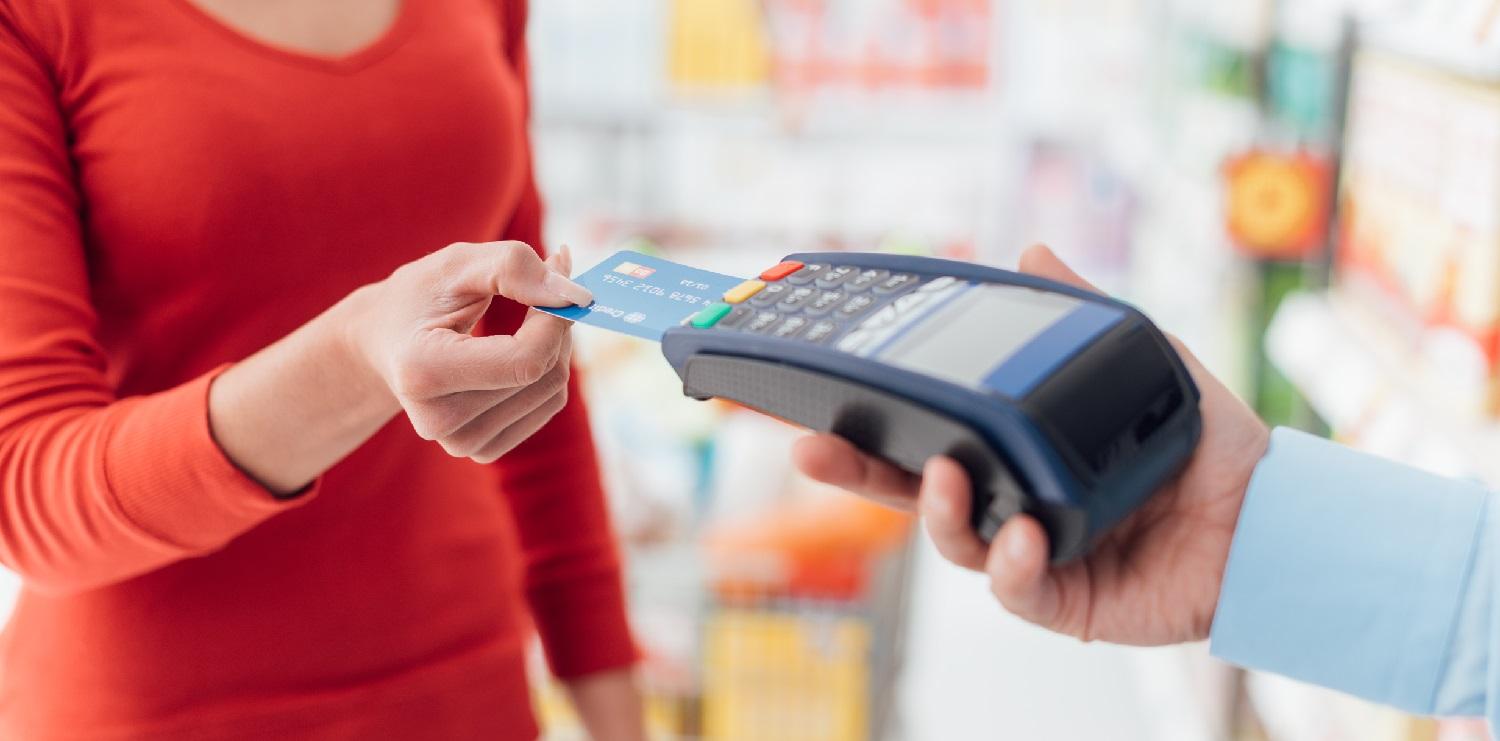MENU
Starting a Business
- Best Small Business Loans
- Best Business Internet Service
- Best Online Payroll Service
- Best Business Phone Systems
Our Top Picks
- OnPay Payroll Review
- ADP Payroll Review
- Ooma Office Review
- RingCentral Review
Our In-Depth Reviews
Finance
- Best Accounting Software
- Best Merchant Services Providers
- Best Credit Card Processors
- Best Mobile Credit Card Processors
Our Top Picks
- Clover Review
- Merchant One Review
- QuickBooks Online Review
- Xero Accounting Review
Our In-Depth Reviews
- Accounting
- Finances
- Financial Solutions
- Funding
Explore More
Human Resources
- Best Human Resources Outsourcing Services
- Best Time and Attendance Software
- Best PEO Services
- Best Business Employee Retirement Plans
Our Top Picks
- Bambee Review
- Rippling HR Software Review
- TriNet Review
- Gusto Payroll Review
Our In-Depth Reviews
- Employees
- HR Solutions
- Hiring
- Managing
Explore More
Marketing and Sales
- Best Text Message Marketing Services
- Best CRM Software
- Best Email Marketing Services
- Best Website Builders
Our Top Picks
- Textedly Review
- Salesforce Review
- EZ Texting Review
- Textline Review
Our In-Depth Reviews
Technology
- Best GPS Fleet Management Software
- Best POS Systems
- Best Employee Monitoring Software
- Best Document Management Software
Our Top Picks
- Verizon Connect Fleet GPS Review
- Zoom Review
- Samsara Review
- Zoho CRM Review
Our In-Depth Reviews
Business Basics
- 4 Simple Steps to Valuing Your Small Business
- How to Write a Business Growth Plan
- 12 Business Skills You Need to Master
- How to Start a One-Person Business
Our Top Picks
How to Attract Customers to Your Restaurant

Table of Contents
It doesn’t matter if you’re new to this business or have been operating a restaurant for years; marketing efforts are critical to overall success. The food industry is continuously growing, which means the competition can be cutthroat. There are multiple marketing strategies restaurants can use to boost revenue and maintain a steady cash flow.
Offline and digital marketing strategies are essential for attracting new customers and retaining existing ones while providing impeccable service — the secret recipe for sustainable success. Today’s most effective strategies can be expensive, but every penny will be worth it.
Editor’s note: Need online marketing services for your business? Fill out the below questionnaire to have our vendor partners contact you with free information.
Use online marketing to bring people in
1. Take amazing photos of your restaurant’s food.
With so many restaurants to choose from, people can take their time finding the restaurant that will satisfy their taste buds. What could be a better way to capture their attention than by posting vibrant, great-looking images of your restaurant’s food?
As they say, a picture is worth a thousand words, so it’s really worth investing in a good camera. Another option is to hire a professional photographer if you’re less confident about your photography skills. You’ll want to make sure, though, that you only use high-quality images for your website, mobile apps and social media pages.
2. Create a simple, yet highly functional website.
You don’t need a fancy website with flashy images, moving parts and background music (they don’t usually work on mobile devices anyway). What you need is a simple, straightforward website that contains all the information that customers need to purchase your food products or make a reservation. The best restaurant website is one that contains your menu, contact information, location, operating hours and other relevant information.
There are many small business funding options that can help cover marketing costs. Here are some of the top small business lenders to consider.
3. Blog about your restaurant.
Adding a blog to your restaurant website is a powerful search engine optimization strategy that could lead new customers to your business. Your blog entries could give your readers: a peek at your kitchen; ideas for how they can save money on their next restaurant visit; tips for pairing food with wine; and a delicious recipe that anyone can try on Thanksgiving, among other tips. Here are more blog post ideas to add value and boost traffic on your restaurant website:
- Customer reviews (stories about their experience)
- Answers to your customer’s most common questions (FAQs)
- Event announcements
- Employee feature stories
- Seasonal trend discussions
- Suggestion lists
- Top 10 lists, such as “Top 10 Desserts to Try on Thanksgiving” or “Top 10 Herbs to Stock in Your Pantry”
4. Go social.
A lot of people rely on social media to find recommendations, search for local businesses and compare brands. Social media is a great place to promote your restaurant because it’s where people are most of the time. Being on social media gives you a chance to interact with your customers, attract new ones by posting photos and content, and promote your restaurant business for free. Social media marketing should be a part of your overall marketing strategy.
5. Go mobile.
Make sure that your website, marketing emails and social media content are accessible from a mobile device. It’s no secret that most people browse websites from their phones. No matter how much effort you put in your restaurant website, if it isn’t optimized for mobile devices, you’re less likely to generate leads. Invest in a website that looks great and functions well from a mobile device, not just from a desktop computer.
6. Sign up for a Google Business Profile.
If you don’t have a website yet, or even if you have, signing up for a Google Business Profile has so many advantages for your restaurant. For starters, it makes it easy for customers to find your store location. You can also obtain better search visibility and gain access to a wealth of analytics. Best of all – it’s free!
How to attract restaurant customers with offline marketing
1. Expand your customer base.
Even a simple change in your target demographics can help increase your revenue. For example, if the majority of your customers are low-income earners, consider creating a campaign to target high-paying customers. This could mean sprucing up your restaurant or adding a special dish to your menu.
2. Encourage more spending.
When your tables are filled, upselling can take your revenue to the next level. However, you don’t want to annoy your customers with persistent attempts to upsell and discourage them from dining at your restaurant again. Make sure your staff is well trained before considering strategies that may include:
- Suggesting items that have the highest profit margins.
- Offering a variety of extras that could accompany the meal ordered by your customer.
- Offering specific items. For instance, if offering a drink, be specific about what beverage it is (iced tea, cola, orange juice, etc.).
3. Delight your guests with live music.
Everyone loves a little entertainment while enjoying good food. Scheduling live music is a great way to attract customers. You could have live music in your restaurant every Friday or during weekends, for instance.
4. Run promotions.
Try running a promotion to increase traffic during slow times. For example, you could offer a free meal for every group of five on days when you have the least number of customers, provide free drinks every Friday night or provide a comp dessert for customers celebrating their birthdays at your restaurant.
5. Don’t forget about loyalty programs.
It is way more expensive to attract new customers than to retain existing ones, so make sure you reward your valued customers for patronizing your business. Loyalty programs don’t just boost engagement and make customers happy. Restaurant loyalty programs also have great potential for driving repeat sales. Here are some tips for a successful loyalty marketing program:
- Your customers don’t want another card that will take up space in their wallets. Consider using a rewards app that they can access anywhere they go.
- An incentive program doesn’t have to be complicated. No one wants to be a part of a program that has a long list of rules and stipulations.
- Tap into your customers’ FOMO (fear of missing out) by showing them exactly what they are missing.
- Offer free food. Customers love free stuff, whether it’s a complimentary drink, pastry or dessert, or an appetizer.
6. Dare to be different.
With so many restaurants out there offering the same products and experience, why should people choose you? There are more than a million restaurants in the U.S. right now. To stay competitive, you need to create your own mark on the industry. Find something unique and special about your restaurant and highlight that in your marketing – it’s a way for people to recognize and remember your business.
Grubhub is an online ordering and delivery service available as both an app and a desktop site that is very popular with consumers. Check out this guide to determine if a Grubhub partnership is right for your business.
7. Stay current with industry trends.
Keep up with the latest trends in the restaurant industry. Here are some of the 2022 industry trends that will continue in the new year:
- There is no slowing down on the use of natural and organic food. Customers will continue to search for flavorful, wholesome dishes. Vegan and plant-based cuisine is continually increasing in popularity. To keep up with the trends, some chefs are moving these dishes to the main menu instead of simply offering plant-based substitutions.
- Green and environmentally friendly practices are a hot topic. Many restaurant owners are reevaluating their inventory and seeking to reduce waste.
- Food delivery services had been gaining popularity for years but are now an extremely common practice among restaurants. Usage drastically increased during the pandemic as people relied on them to safely receive meals. Restaurants quickly adapted and implemented new technology to keep up with demand and help their businesses stay afloat. Some restaurants have even transitioned to a takeout-only model to cut down on staffing and other costs.
- Supply chain issues and inflation are leading restaurant owners to adjust menu items and prices. This is also part of a shift to simplify menus to better manage inventory, improve quality and decrease waste by creating a small number of excellent dishes instead of a long menu of hit-or-miss options.
- Restaurant owners are strategically incorporating new technology and digital resources to cut costs and improve the efficiency of their operations. Examples include QR code menus and self-service stations.
Why your restaurant marketing strategy matters
With hundreds of restaurants entering the market each year, the competition has never been tougher. To ensure more cash in your register, create a marketing strategy that will attract more customers, retain existing ones and convey that you provide quality service.
It shows you’re a tech-savvy business owner.
A current or trendy marketing strategy that uses a variety of digital resources shows your business is smart. Don’t let your restaurant feel stuck in the past with outdated tactics. A professional website, social media presence, email marketing, and high-quality photos of your restaurant’s food and content marketing tells the public you know what you’re doing.
Check out the latest technology for the best POS systems and consider switching over to an iPad-based POS system.
Keep your customers engaged.
As you build customer loyalty, make sure announcements and reminders reach repeat customers. You want this valuable population to hear about promotions, events and new menus. Check out the best CRM software available for building campaigns and communicating with your audience.
Helps you stand out among the competition.
Your business will not stand out if you aren’t taking advantage of marketing opportunities. People pay attention to how much publicity restaurants are receiving. If the public isn’t hearing from you or about your restaurant, there may be a growing perception that your business isn’t worth their time and money.
Boosts sales.
Marketing costs may seem like a lot upfront, but the return on investment will have a significant impact, even if it’s gradual. Amazing food is not enough. To grow your business, you need to expand and regularly engage with your customer base by combining online and offline marketing techniques. Good marketing will especially boost sales for special events and other unique initiatives.
Builds a long-lasting reputation.
The success of your marketing plan will determine your reputation. Your restaurant won’t see long-term success without a strong public presence. People who have never eaten there should at least have a sense of what kind of food you serve. Your restaurant should also come to mind when diners think about the type of cuisine you serve or the experience you offer.
Additional reporting by Mark Masterson.










